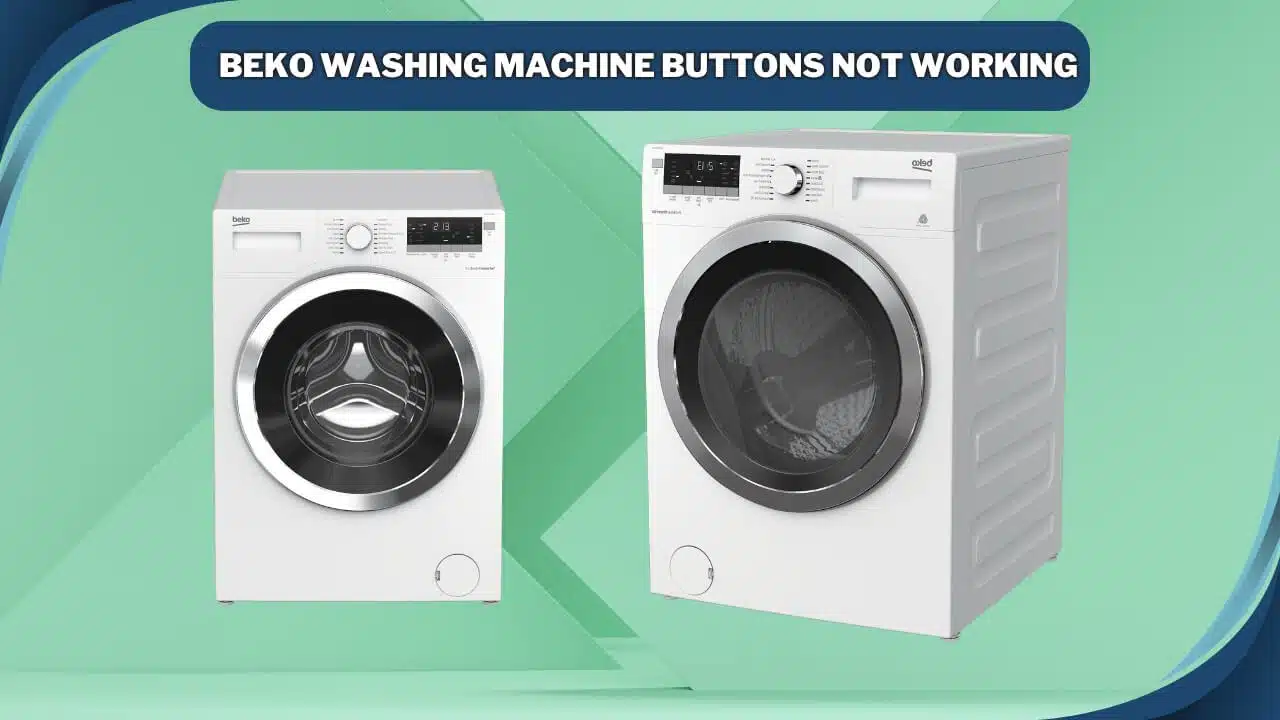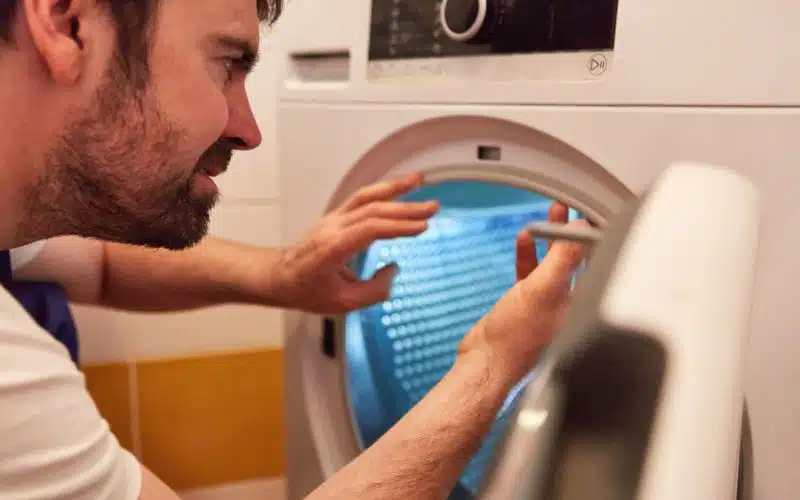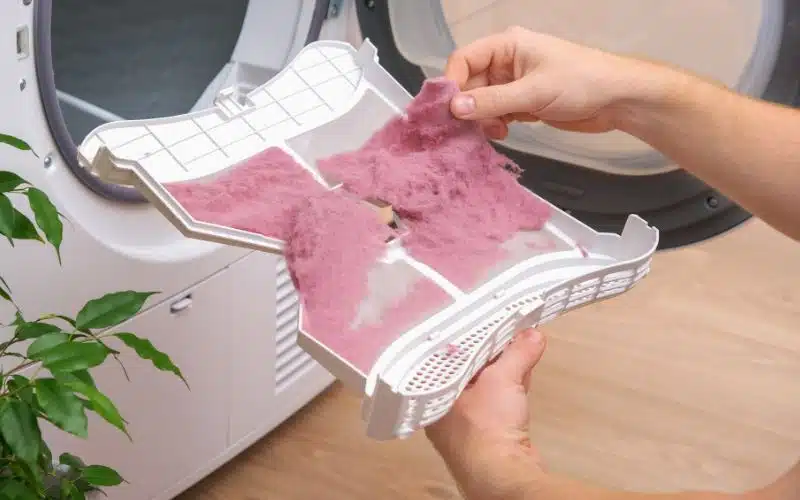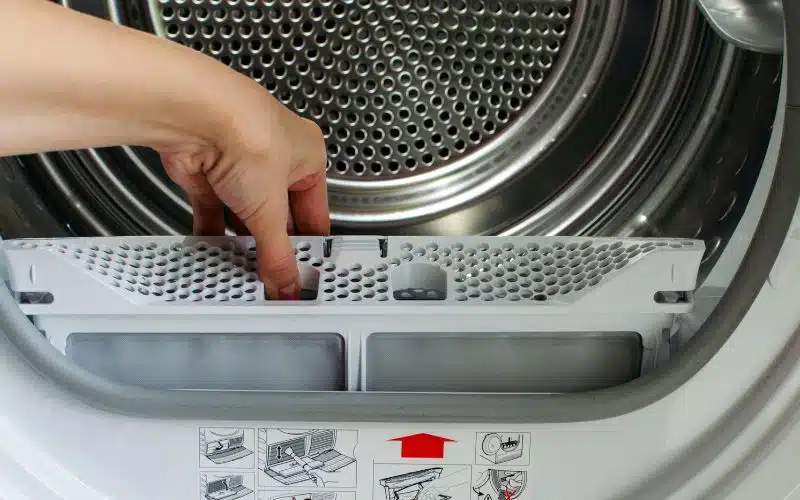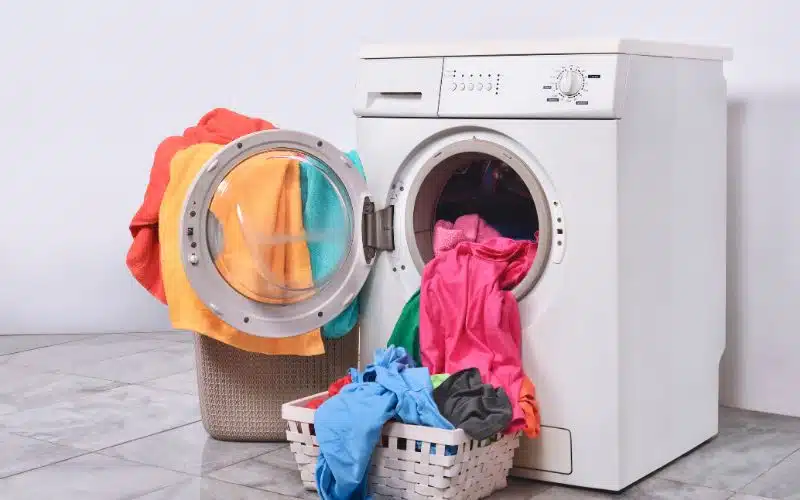Have you ever been in a situation where you got a beautiful dress that looks so good on you? Then you decide to take it to the laundry, and it doesn’t look attractive to you anymore?
These things happen. Sometimes it’s not even about the dress. It’s about the way and method used in drying these clothes.
The best setting for a Samsung dryer is not just one setting. They are temperature selection, anti-static, eco dry, dry level, wrinkle-prevent, mixed load bell, damp alert. With these settings, drying clothes using Samsung dryers would come out beautiful.
What Dryer Settings Should I Use?
For you to get the desired results, the dryer settings you can use are as follows;
#1. Automatic or Timed Dryer
You can refer to this setting as the automatic or timed dryer mode because it is set for a specific time for the timed dryer. You will have to set the drying time yourself using this particular option.
The automatic option detects when your clothes are dry using a moisture sensor.
These settings come in different names depending on the brand of dryer used. Check the Samsung manual to know what is written on it.
This setting is usually the default setting of the dryer. However, this could damage your fabrics when overused. It is suitable for heavy and strong materials.
#2. Gentle Cycle
This setting, as the name implies, is calm. If you don’t want that harsh drying or a scalding sensation on your fabrics, this setting is for you.
The gentle cycle generates mild heat for your materials.
Garments that are soft, silky, and embedded with beads and embroidery require this setting not to damage the designs and their smooth texture.
It also reduces the risk of melting and stretching the fabrics. However, the only issue here is that you will have to wait longer for your garments to dry.
To some people, this isn’t a problem. After all, protecting their delicate fabrics is worth the wait.
#3. Steam Cycle
The steam Cycle is a new development. This is because it wasn’t always made available on dryers.
However, manufacturers have put a unique setting to make work easier for dry clothes. So let’s say this setting refreshes your fabrics.
This setting does not use dry, hot air. Instead, steam is generated within the dryer drum, which is also used to remove wrinkles from garments.
The steam Cycle does not just remove wrinkles, but it also reduces that musty odor from clothes that have been stored for a long time.
Unfortunately, this means your damp clothes can’t use this setting.
#4. Air Dry or Air Fluff
Heat is not used in this setting to dry fabrics. Instead, it dries your clothes by simply drawing air from the surrounding area.
This air is room temperature air as the drum tosses your materials. The air dry or fluff setting is suitable for fabrics like blankets.
Since it doesn’t produce heat, it is suitable for drying dusty clothes, and not just that, it is ideal for fabrics that have been flattened as a result of storage.
This setting is used for dried clothes and not for damp clothes. Its name gives your garment that fluffy look it once had before repeated use flattened it.
Therefore, this is an excellent setting for your duvets and coats.
What Settings Can I Use for Samsung Dryer?
For a Samsung dryer, the settings that you can use are as follows;
#1. Wrinkle Prevent
This setting removes wrinkles and for the fabric not to stand still. The process involves the spinning of the drum and intermittently tumbling the material.
This setting does not use heat to dry the garments as it is majorly to straighten fabrics and avoid wrinkles on your clothes.
#2. Rack Dry
The rack dry setting is available on the Samsung dryer when you want to dry clothes but don’t need them to turn or tumble them.
This setting provides a rack for the fabrics to be dried on.
The importance of this setting is that your clothes won’t get rumpled because they’re on a shelf for drying.
#3. Temperature Selection
The temperature selection controls the heat in the dryer, whether low or high heat. There are different temperature levels for other fabrics, which I will discuss.
It is essential to know how and when to use these temperatures. These are;
#1. High Temperature
This ranges from about 140-150°F. This is the highest temperature for the dryer and is only used when sturdy fabrics are to be dried. Such fabrics are cotton and heavy duvets.
#2. Medium Temperature
The medium temperature ranges from about 130-135°F. This is not too hot for fabrics. However, some clothes won’t do well in medium temperatures.
For example, light cotton can be dried using medium temperature and synthetics. These garments would do well under this condition.
#3. Medium-low
Knitted fabrics would do well under this temperature. The medium temperature is just in between the medium temperature and the low.
This means it’s not high, nor is it too low. Not many fabrics can do okay here, but a few can anyways.
#4. Extra-low
Ranges from 100-110°F, which makes it extremely low. This temperature is used when you want to dry your fabrics and are not in a hurry gradually.
However, very wet clothes won’t do well here. Also, you should place only very light materials here.
Clothes Are Not Dry After Using Samsung Dryer?
If your dry cycle uses a Samsung dryer and your clothes are still damp, then it could be that the dryer is faulty, too many fabrics in it, low heat, few clothes, or a newly installed dryer.
The reasons for this are numerous.
The vents of your washer could be blocked, thereby not drying your clothes. When the ducts are blocked, heat is not able to circulate correctly.
In addition, your dryer may end after a few minutes, and your clothes are still soaking wet. In a situation like this, the moisture sensor could be dirty.
These are possible causes of this problem.
Again, mixed loads may cause this issue of clothes not being dry after using a Samsung washer. Mixed loads mean you probably have jeans and t-shirts combined in the dryer.
The jeans stay behind the drum while the t-shirts remain in front. The sensor detects that the t-shirts are dry when this happens, ending the cycle.
It might sound funny to say having few clothes in the dryer can cause this issue. Yes, it does. When there are too many clothes, it isn’t good.
So also, when clothes are few in the dryer, it’s not quite okay. Try adding a few more clothes to your Samsung dryer to have a balance.
Do you also know your eco dry setting could be the cause too? This setting possesses a design to minimize heat output to save energy.
It’s a good setting when you want to dry fabrics slowly as it takes time because it doesn’t use hot air.
However, you might incorrectly put the eco dry setting on default, and then you notice your fabrics aren’t drying as they should. If this is the case, turn the eco dry setting off.
Having a broken heating element can cause your clothes not to dry after using a Samsung dryer.
The heating element is essential because the dryer can’t work correctly without this heating element that produces hot air.
So always check your heating element for faults and fix them as soon as possible.
Finally, lint buildup prevents the filter from working, making the dryer unable to dry your clothes.
Once the filter is covered with lint, air circulation is minimal, preventing it from reaching the spaces to dry clothes.
Therefore, it is advisable to clean the lint trap to avoid this problem after every use.
The above discussed may not even be the cause of the issue. However, it is good to check and know why your clothes are still wet after using your Samsung dryer.
If you check all these and find no fault, your Samsung dryer has an electrical or technical problem that experts can repair.
Conclusion
Life is becoming easier with the manufacturing of certain appliances. Now, something that would have taken you a long time can be done in a few minutes.
For example, drying clothes just became more accessible with a Samsung dryer. It doesn’t just make work faster; it also comes with unique settings.
The knowledge of these settings has reduced a lot of issues we face with our fabrics.
